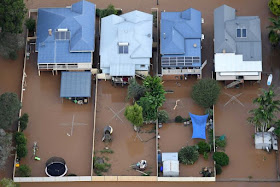The challenge
In his analysis of the Paris Agreement on mitigating climate change, The Guardian’s George Monbiot said: “By comparison to what it could have been, it’s a miracle. By comparison to what it should have been, it’s a disaster.” On one hand the outcome was better than predicted as Article 2 states that parties to the agreement will hold global average temperature increases “to well below 2°C” and “pursue efforts” to limit this to 1.5°C.
 |
| The "carbon law" for the 2-degree target, from “A roadmap for rapid decarbonization”, Rockström, Gaffney, Rogelj, Meinshausen, Nakicenovic and Schellnhuber, Science 355: 1269-1271, 24 March 2017 |

